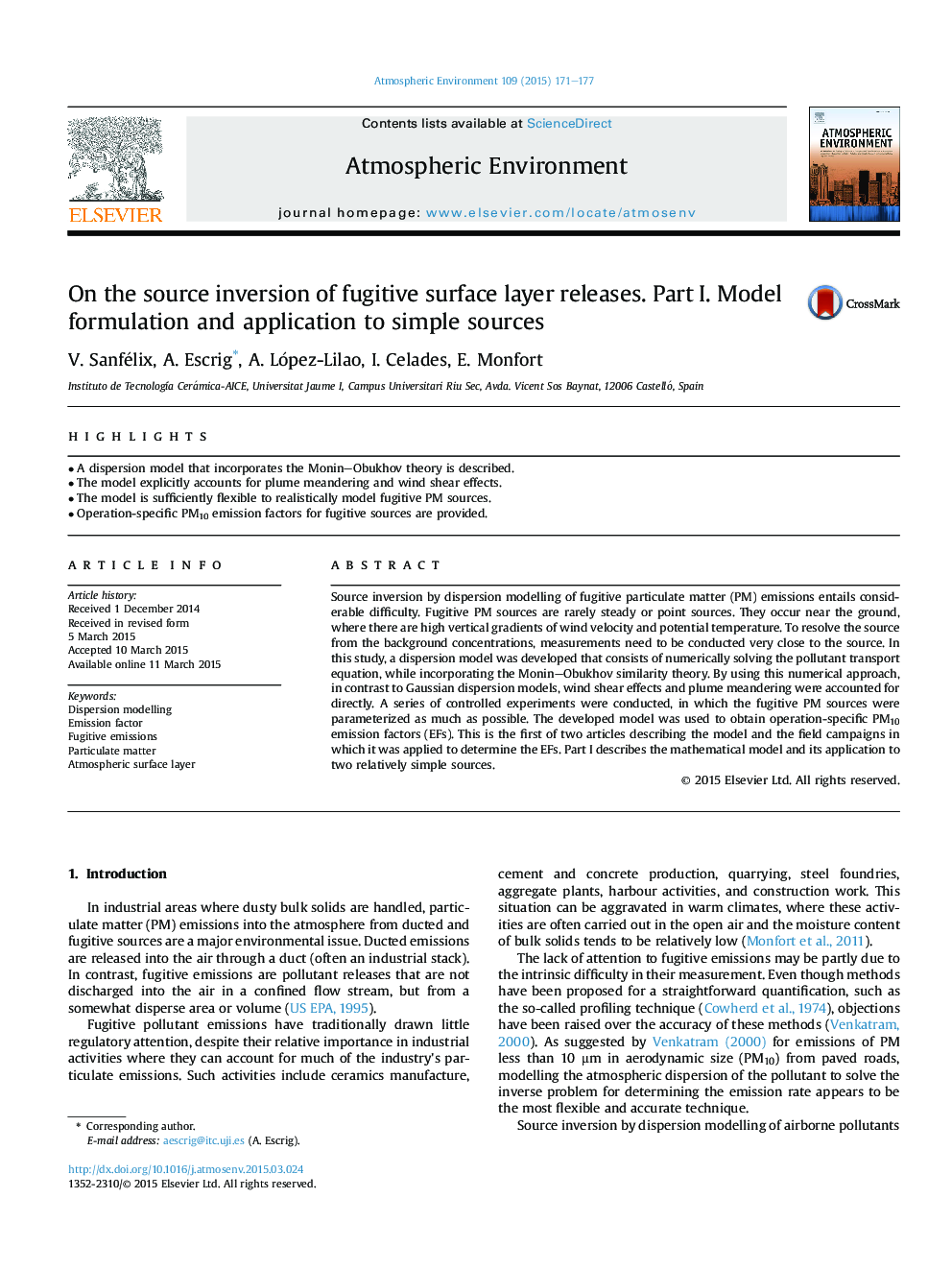| Article ID | Journal | Published Year | Pages | File Type |
|---|---|---|---|---|
| 6338222 | Atmospheric Environment | 2015 | 7 Pages |
Abstract
Source inversion by dispersion modelling of fugitive particulate matter (PM) emissions entails considerable difficulty. Fugitive PM sources are rarely steady or point sources. They occur near the ground, where there are high vertical gradients of wind velocity and potential temperature. To resolve the source from the background concentrations, measurements need to be conducted very close to the source. In this study, a dispersion model was developed that consists of numerically solving the pollutant transport equation, while incorporating the Monin-Obukhov similarity theory. By using this numerical approach, in contrast to Gaussian dispersion models, wind shear effects and plume meandering were accounted for directly. A series of controlled experiments were conducted, in which the fugitive PM sources were parameterized as much as possible. The developed model was used to obtain operation-specific PM10 emission factors (EFs). This is the first of two articles describing the model and the field campaigns in which it was applied to determine the EFs. Part I describes the mathematical model and its application to two relatively simple sources.
Keywords
Related Topics
Physical Sciences and Engineering
Earth and Planetary Sciences
Atmospheric Science
Authors
V. Sanfélix, A. Escrig, A. López-Lilao, I. Celades, E. Monfort,
